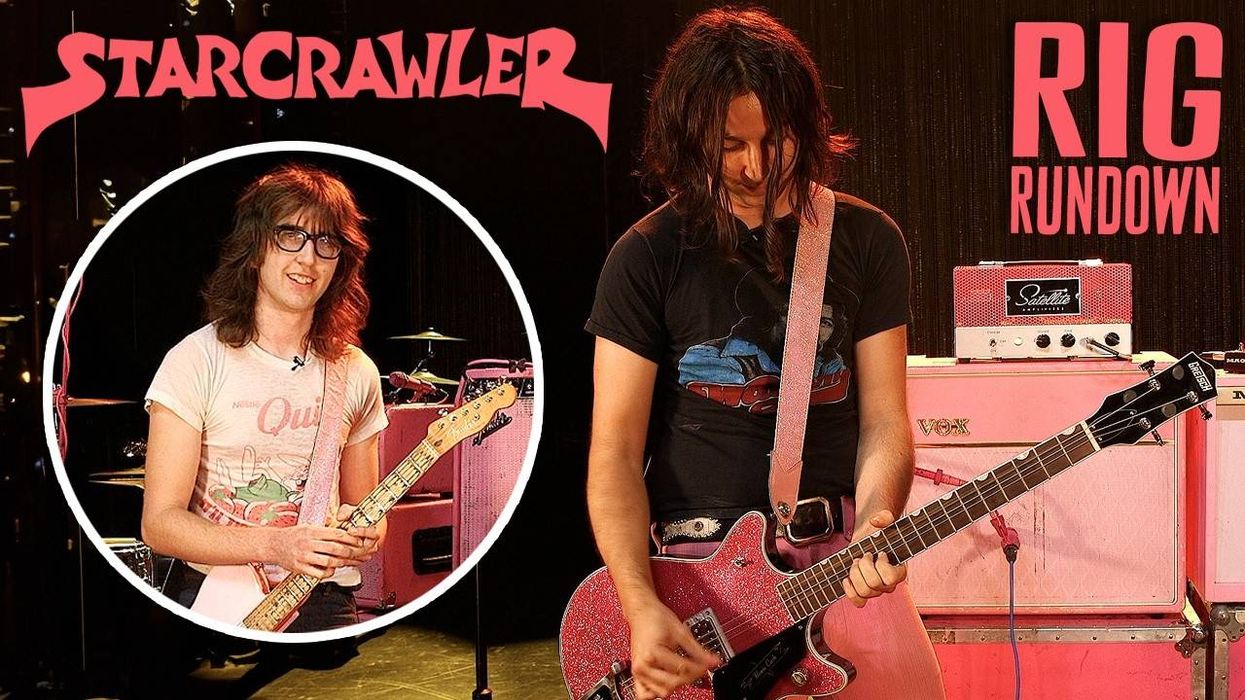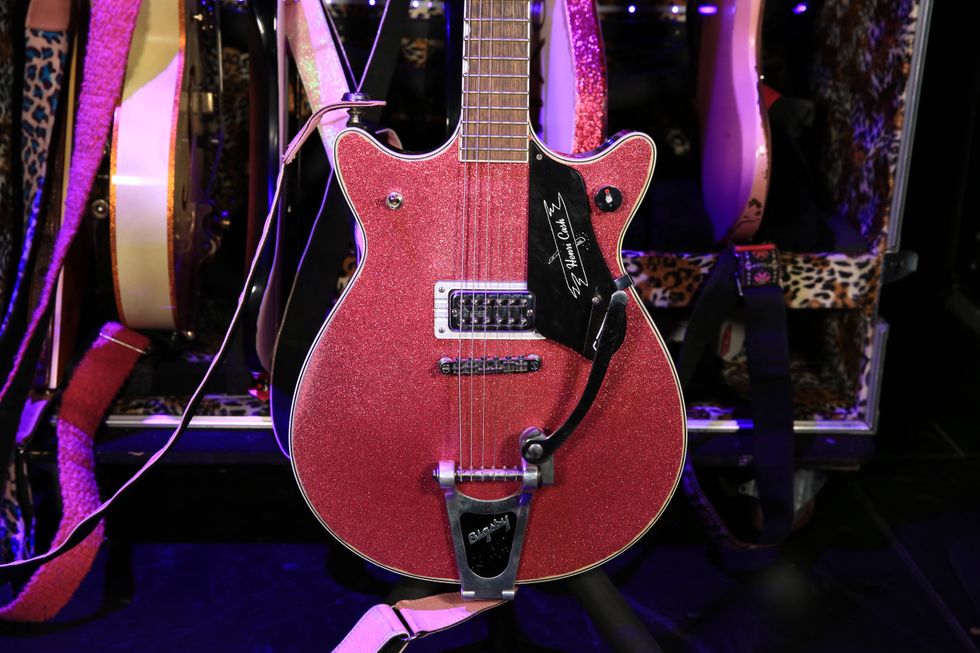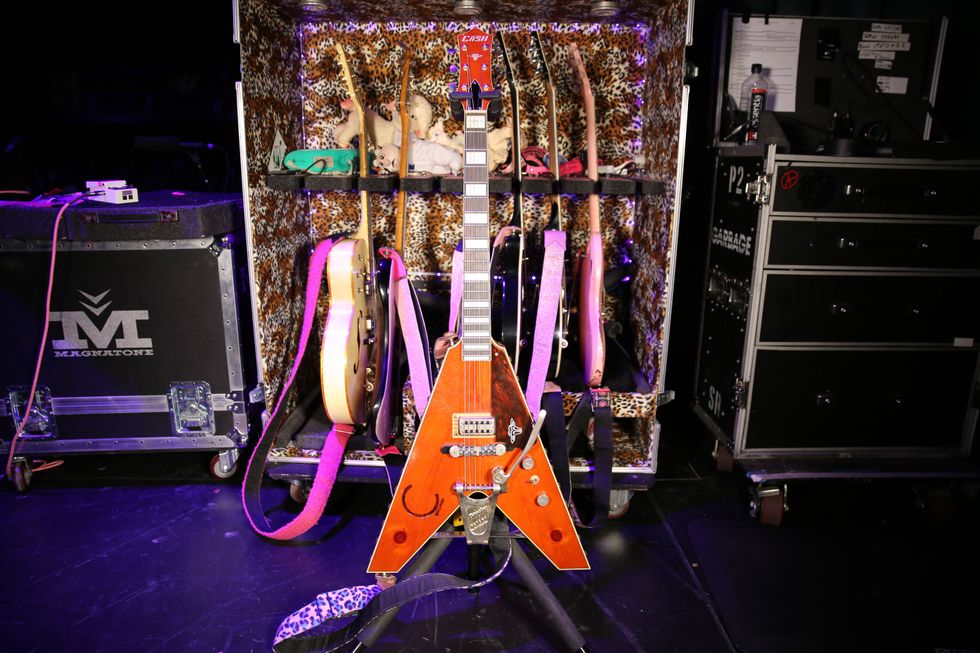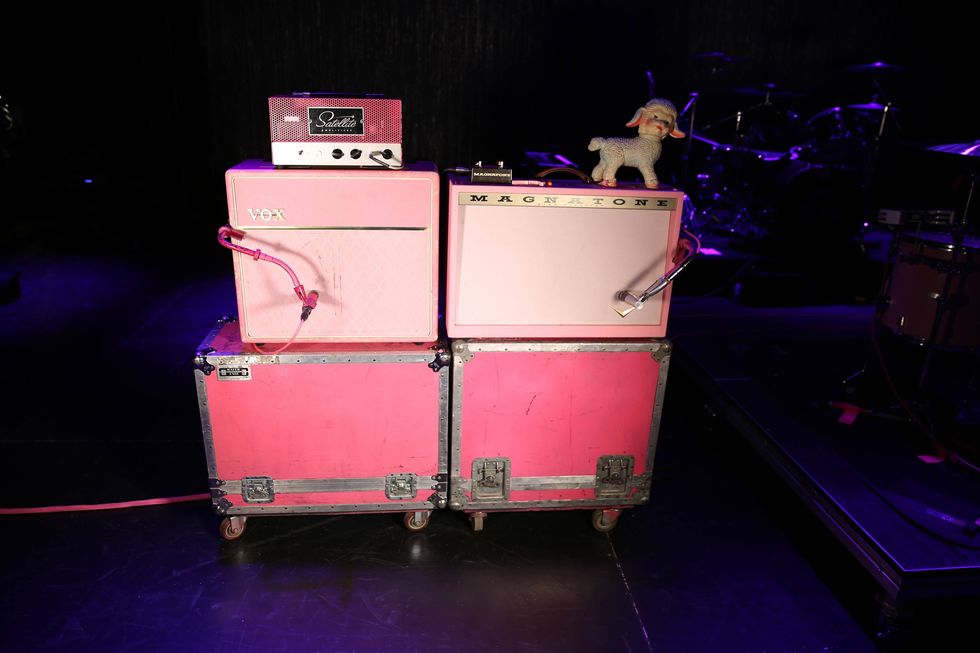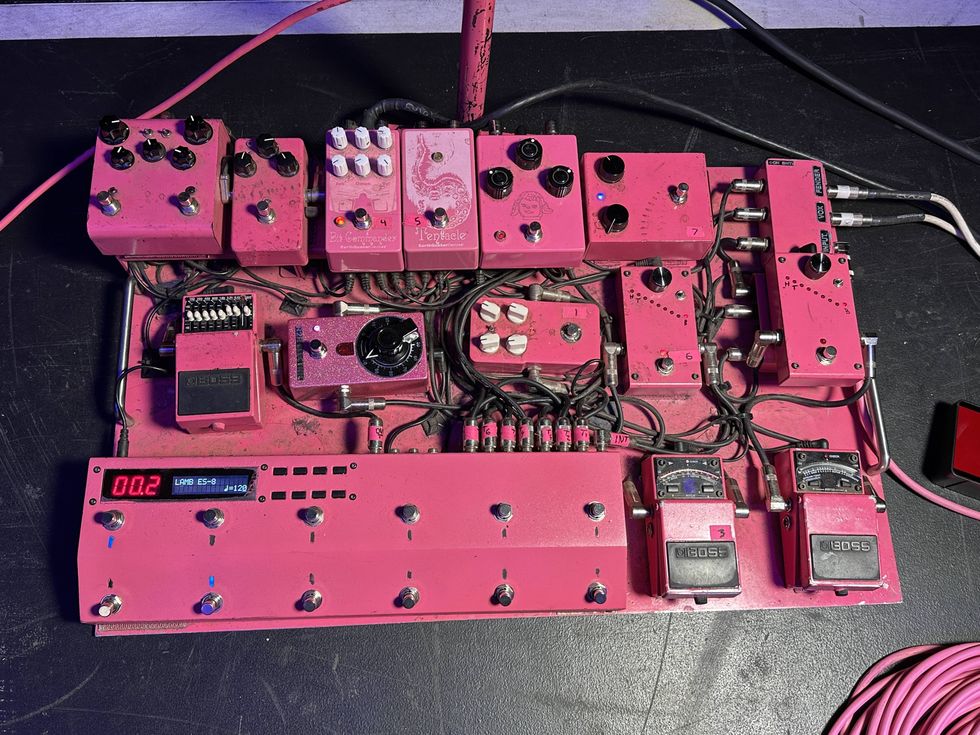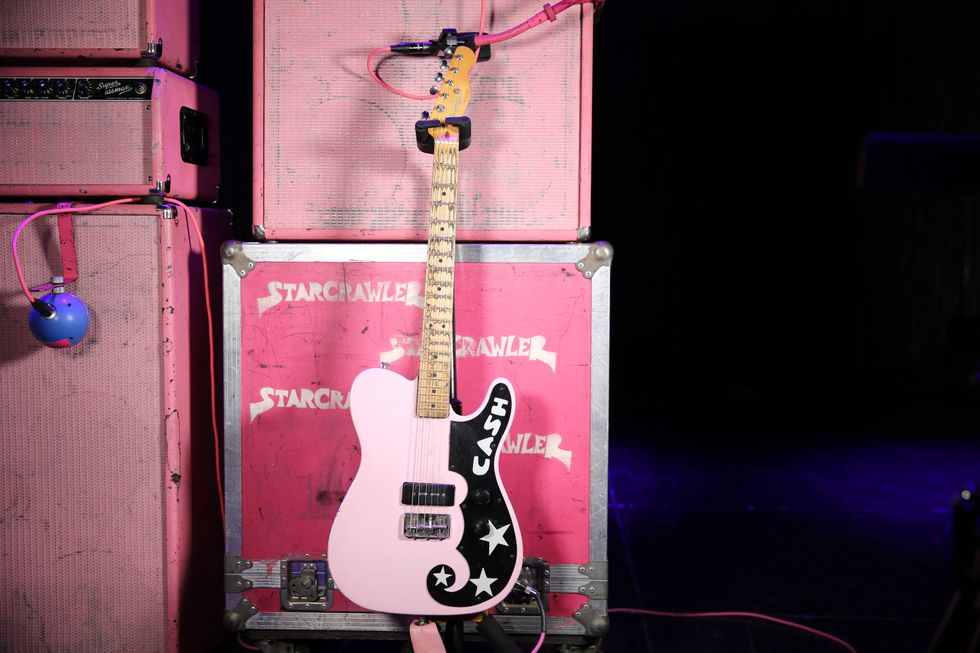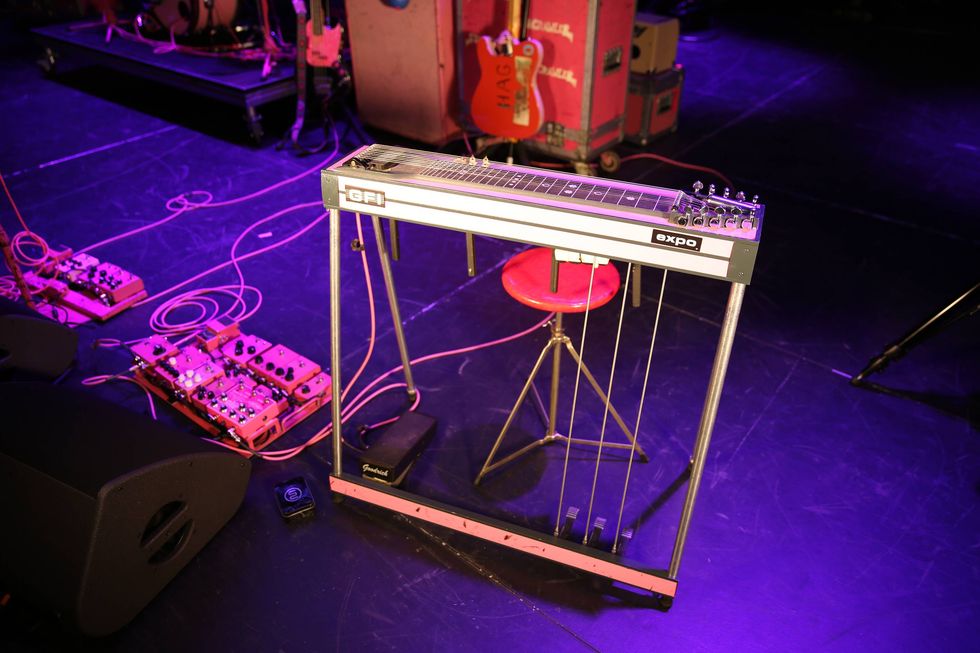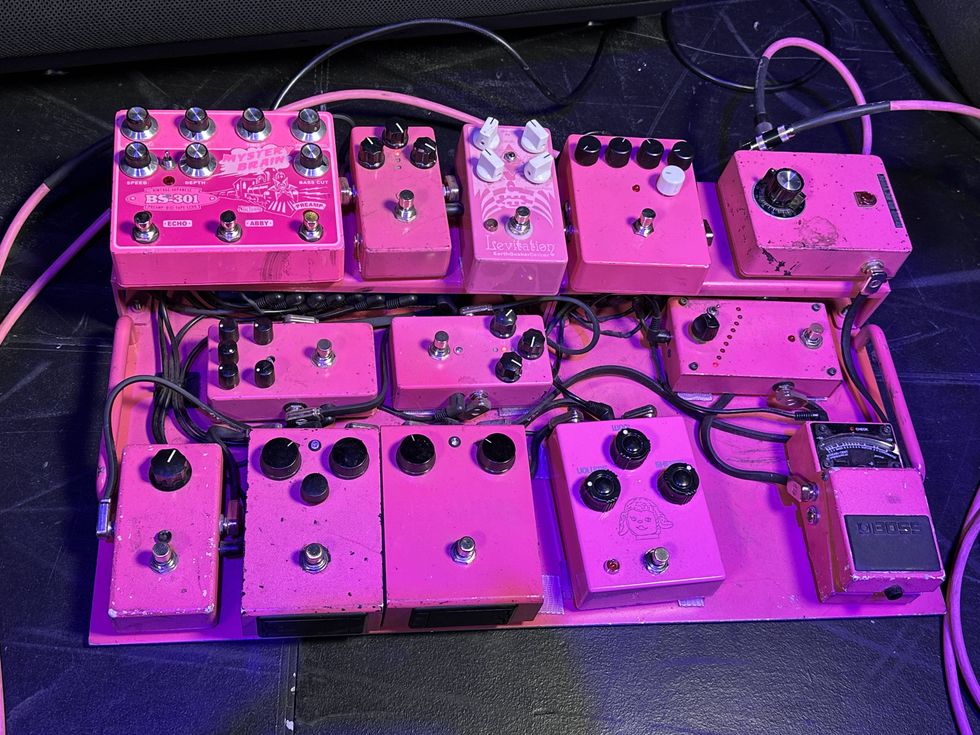Musical scaffolder Mat Mitchell details how ’80s tech (Fairlight CMI) and design (headless guitars) have influenced the band’s sound and what modern gear he uses to approximate it.
Rut busting and reconstructing has probably been happening since the discovery of fire and advent of the wheel. Guitarists confront it each time they pick up a new instrument to avoid predictable patterns and tones. Premier Guitar contributor (and recent Rig Rundown subject) Pete Thorn has addressed this by suggesting several practices to approach our beloved 6 strings in a fresh perspective. And recently John Bohlinger recommended playing a different instrument to fertilize musical crops. But what does a guitar-playing producer and multi-instrumentalist do to shake things up for his band’s fourth album? Well, for Puscifer’s Mat Mitchell and the band’s 2020 release, Existential Reckoning, you go back in time 40 years to 8-bit synth sounds and the archaic sampling lurking inside the proto-digital Fairlight CMI.
“Part of [the appeal],” Mitchell told PG in a 2021 interview, “is the flow—the way that you work when you’re using these tools. It forces you to do things differently. They are very limited, and being creative within very set boundaries is really good.” And being the creative force he is, Mitchell found gold in the antiquated sounds and tech.
“They sound very unique,” he explains. “Of course, you can sample one and put it in a laptop, but it’s different. All the voices are separate hardware. When you hit a note, it is bouncing around between [processor] cards, so you can hit a note five times and it may sound different all five times. There are all these little things that affect the way it sounds when you’re performing, which is a very different sound from what you get when you sample.”
But he would never tour with this digital dino, so how does Mitchell recreate 8-bit tones in a performance setting? Thankfully, moments ahead of the audience filling the pews of Nashville’s iconic Ryman Auditorium, Puscifer’s aural architect welcomed PG’s Chris Kies for a chat about how Existential Reckoning’s inspiration took him back to the future, and how his live rig has metamorphized and been miniaturized with contemporary gear to realistically represent those superannuated sounds.
Brought to you by D’Addario XPND Pedalboard.
Xcellent Axe
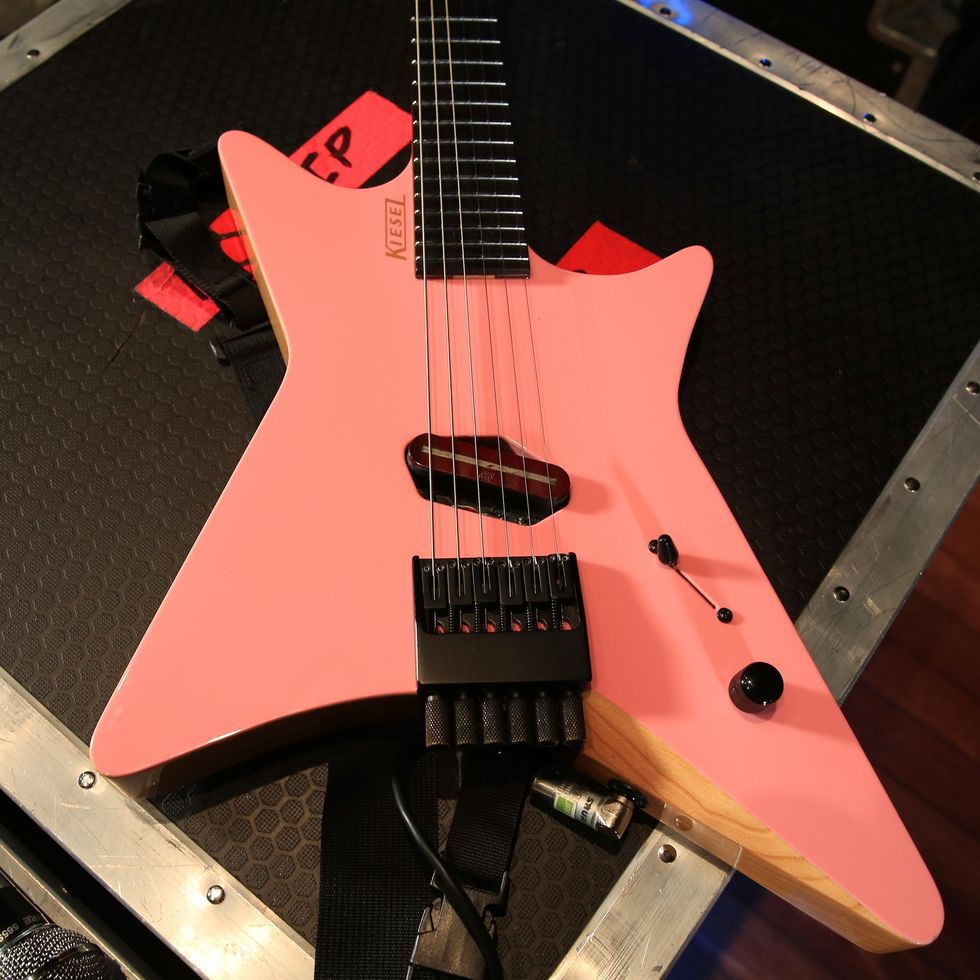
While recording Existential Reckoning, Mitchell relied heavily on a Steinberger GL2T. Not wanting to tour with it, he tapped Kiesel Guitars to build him a few custom Type-X models for the road. This bodacious beauty has a swamp ash body, a 3-piece walnut/maple neck with thru construction, an early version of Seymour Duncan’s first AlNiCo 2 Stack Tele pickup, and a fixed bridge. All his guitars take D’Addario EPN115 XL Pure Nickel strings (.011–.048). It’s worth noting the usual curvy contours and bevels found on a standard Kiesel Type-X were removed by request from Mitchell, who prefers hard-edged instruments like his prized Esquire. Another mentionable mod is the seemingly straight-ahead 3-way pickup selector (bridge, right?) that rolls the tone all the way off (middle) for when Mitchell grabs an EBow and a slight Q-notch filter (neck) for lead or chordal stuff that he wants tucked under. When it’s in the standard bridge position it bypasses the tone circuit. This wiring and tonewood collection are found on all three Type-Xs we’ll see.
X Marks the Spot
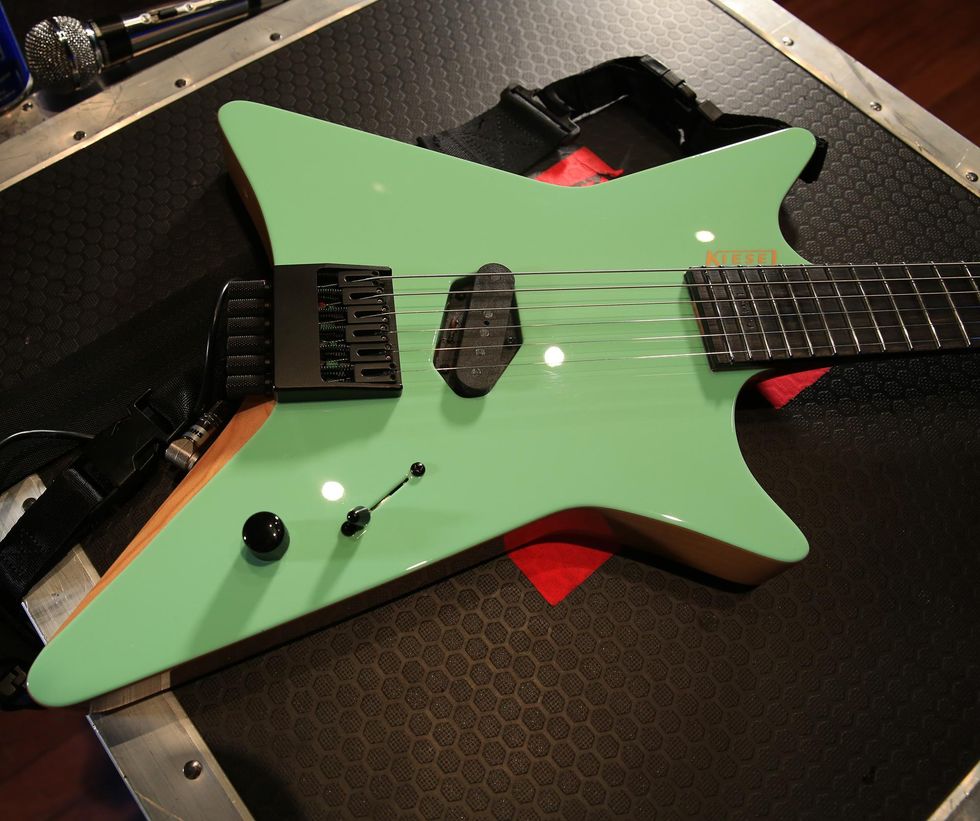
Here’s another Kiesel Type-X, but this one has a Seymour Duncan Antiquity Tele single-coil. Besides the radical visuals these instruments add to the band’s stage production, part of the choice was pragmatic because the lightweight, headless design allows Mat to swing the guitar off his shoulder in a split second and control the Waldorf Iridium synth engine for Existential Reckoning jams.
The X-Man
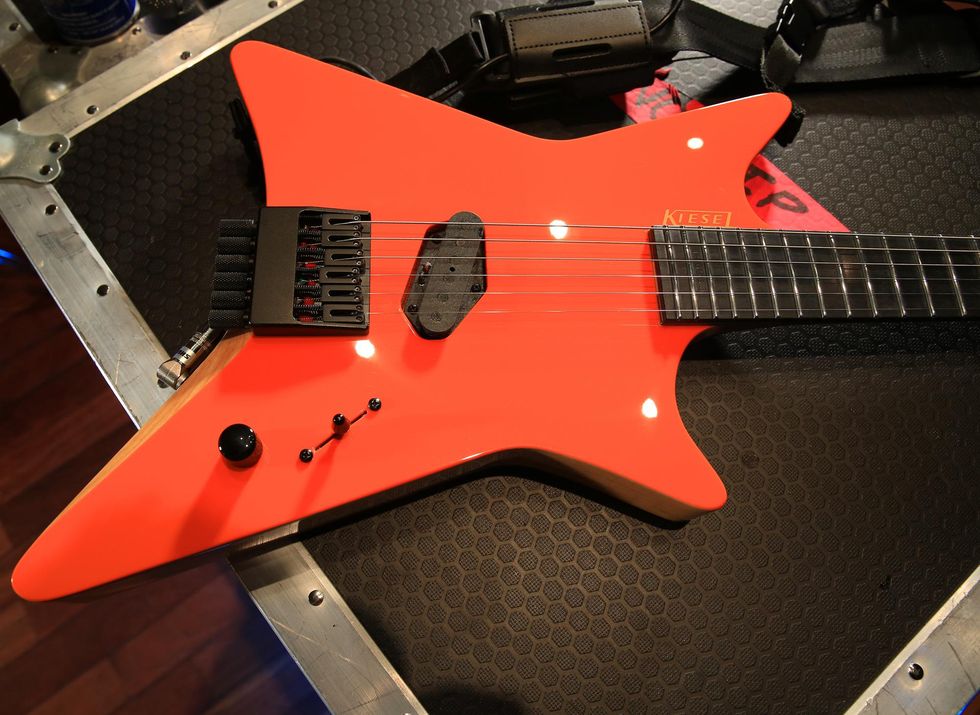
Above is Mitchell’s third Type-X Kiesel. He mentions in the Rundown that “once you give me a guitar, I don’t like to give it back,” so if he has it his way, he’ll start and finish the show with the same X.
Tidy Tones
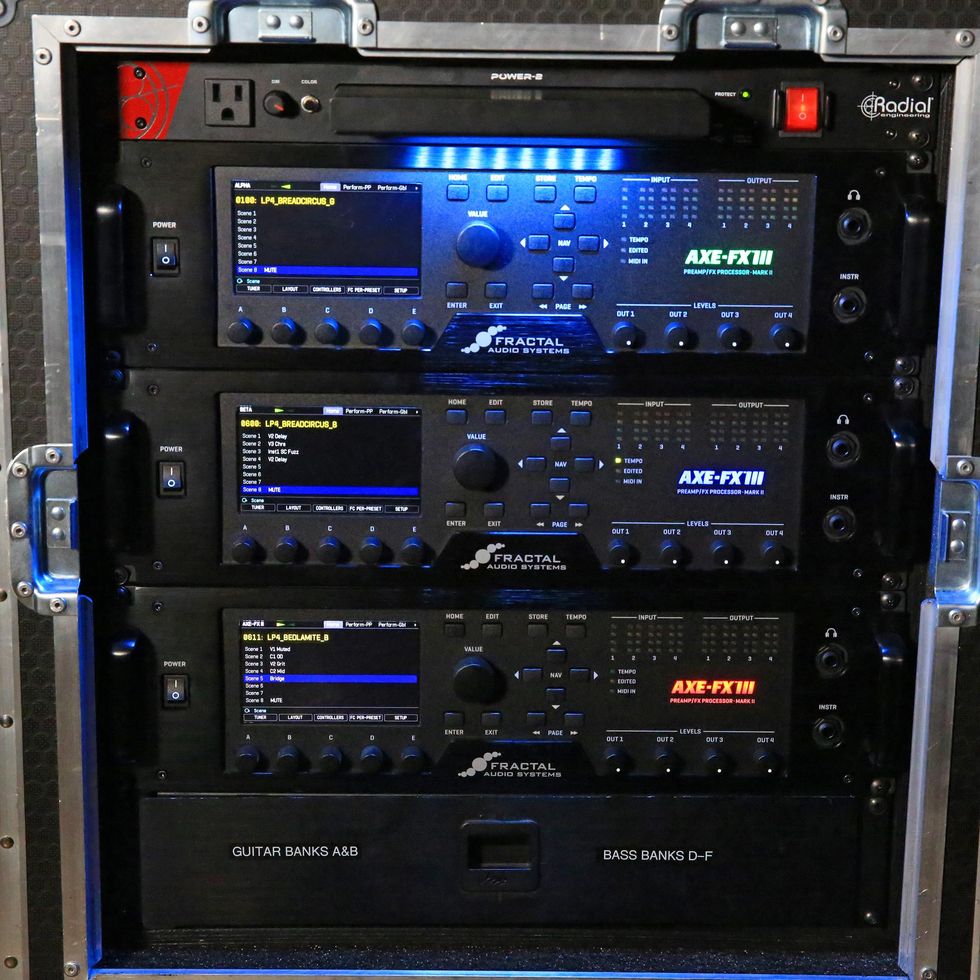
“There’s a few reasons we shifted to the Axe-Fx III,” admits Mitchell. “First, we have enough songs that our rig was getting bigger, more complex, and it had more failure points. We also wanted a clean stage, so there’s no amps, no cabs, no pedalboards onstage, and that’s why on this run we’re now using wireless, too.” Most of his patches are based around either a Mesa/Boogie Mark II C+ (dirty) or Vibro-King (clean). The band enjoys free-range stage access with Shure Axient AD4Q units.
Lone Wolf
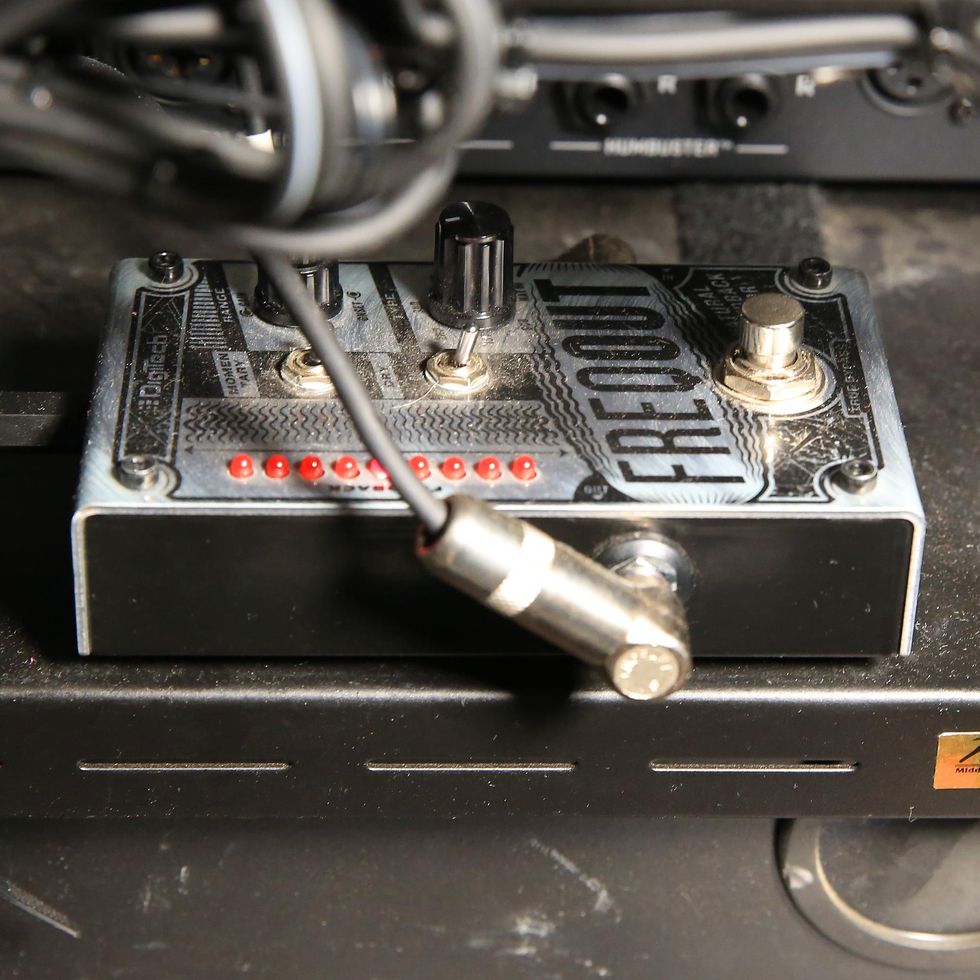
His only guitar-specific hardware outside the Axe-Fx III is this DigiTech FreqOut, to help Mitchell stir up a funnel of feedback.
Fear the Gear
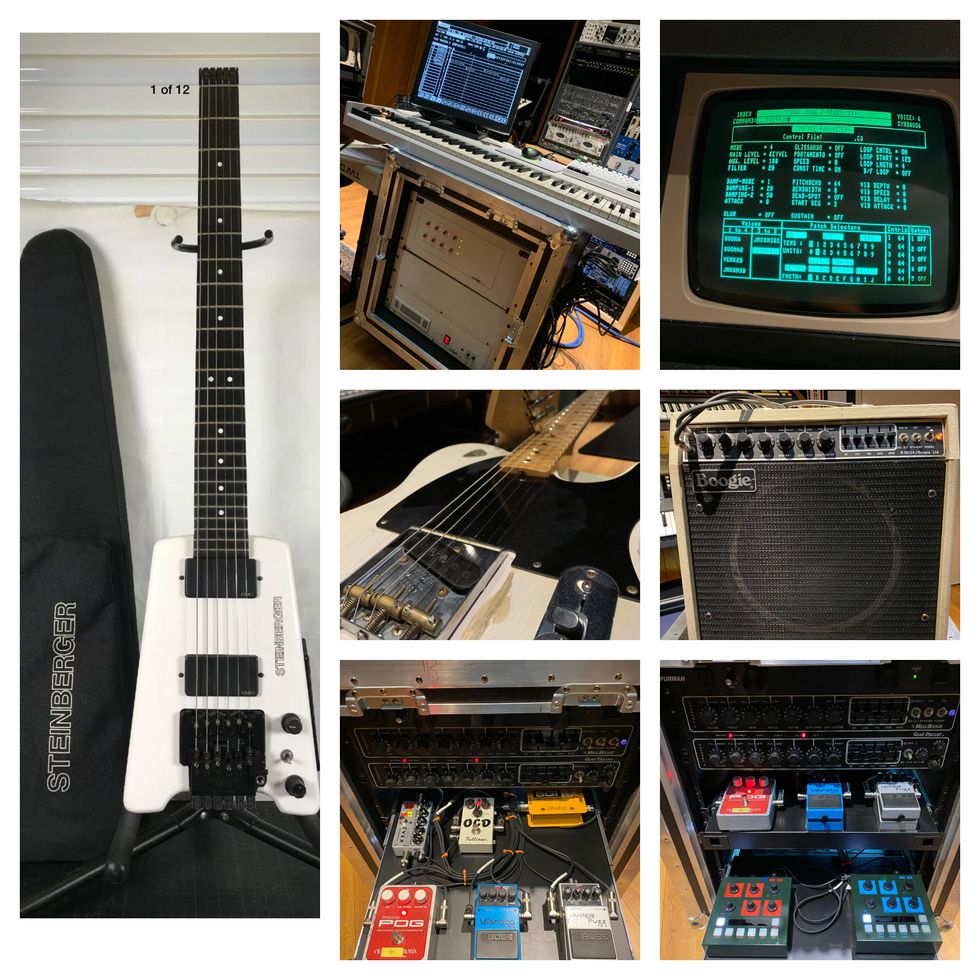
Here’s the bulk of the gear used during the recording of Existential Reckoning and the corresponding Live at Arcosanti album, performed in the depths of the Arizona desert. Starting on the left is the Steinberger GL2T, then a pair of shots of the Fairlight CMI digital synthesizer, sampler and digital audio workstation. Below that is his Fender Custom Shop Esquire reissue and Mesa/Boogie Mark II C+, and the bottom row shows Mitchell’s choice stomps: ZVEX Fuzz Factory, Fulltone OCD, Electro-Harmonix Micro POG, Boss VB-2 Vibrato, Boss FZ-2 Hyper Fuzz, and Radial SGI. The lower-right shows a pair of Oto Machines (BOUM Warming Unit and BIM 12-Bit Delay).





![Rig Rundown: Russian Circles’ Mike Sullivan [2025]](https://www.premierguitar.com/media-library/youtube.jpg?id=62303631&width=1245&height=700&quality=70&coordinates=0%2C0%2C0%2C0)



















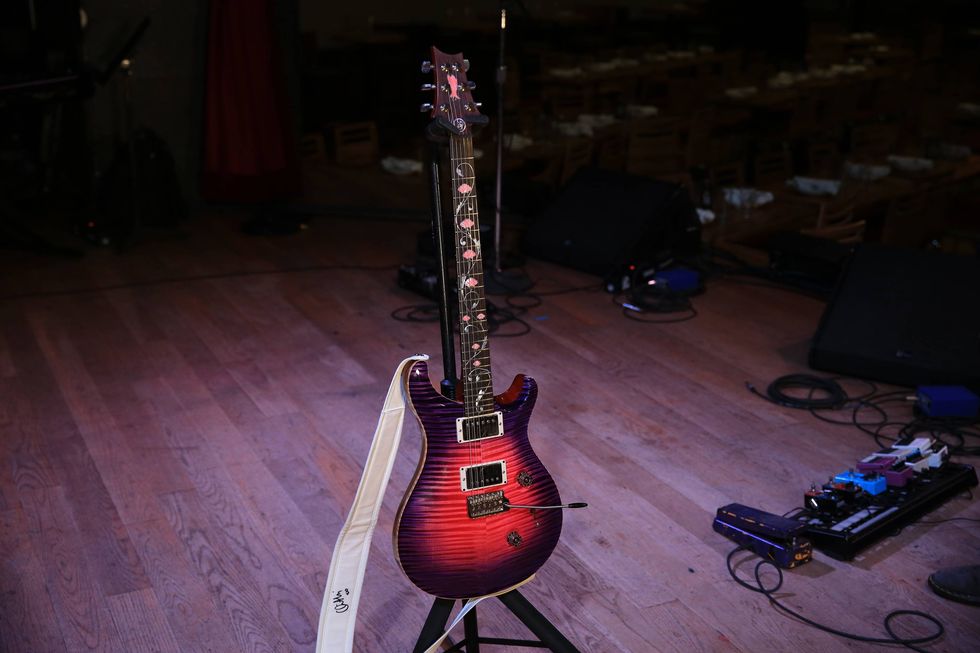
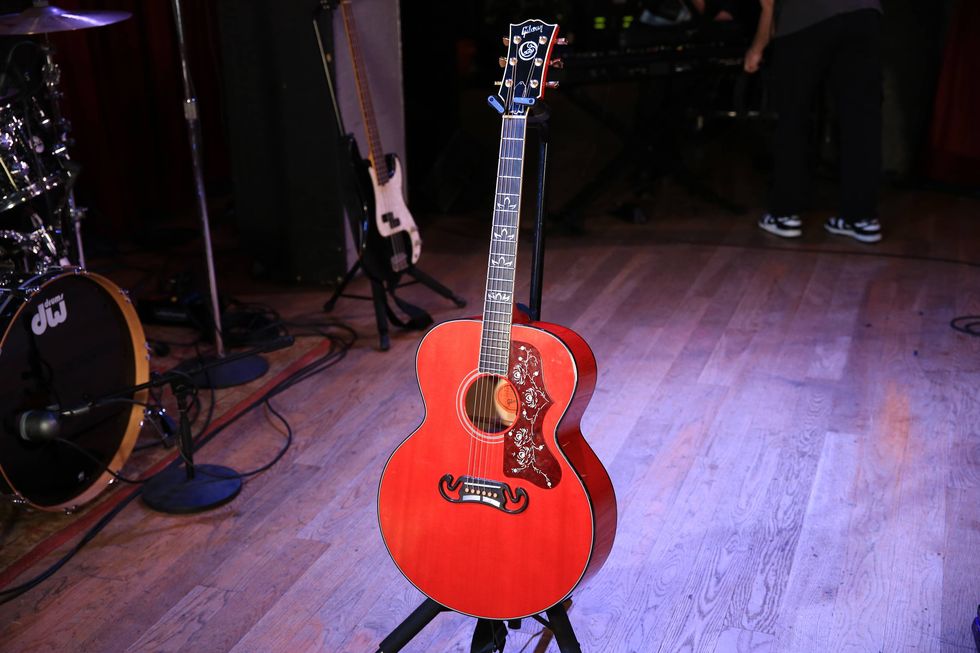
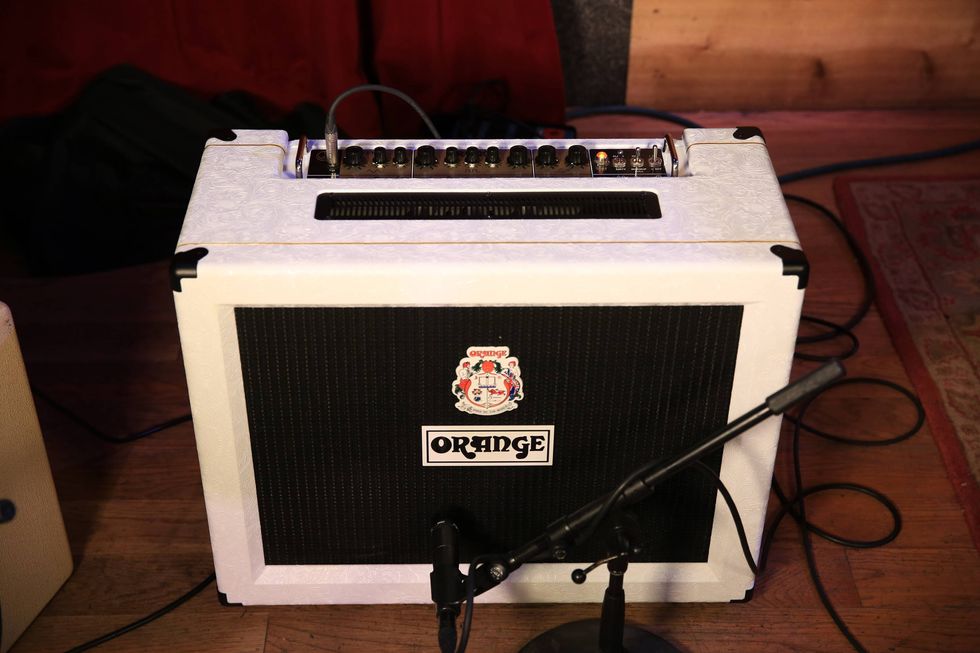
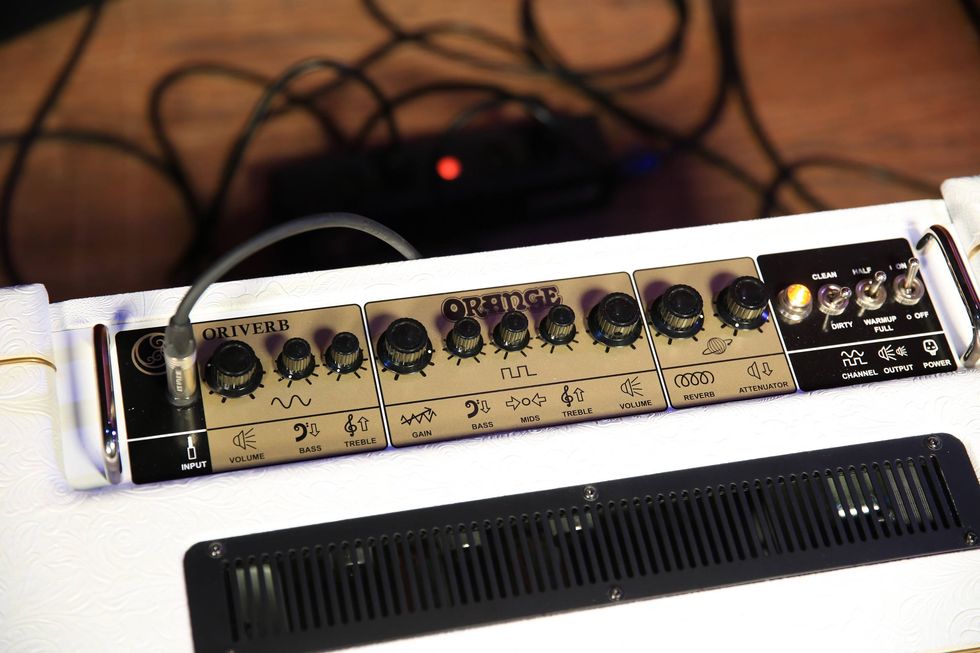
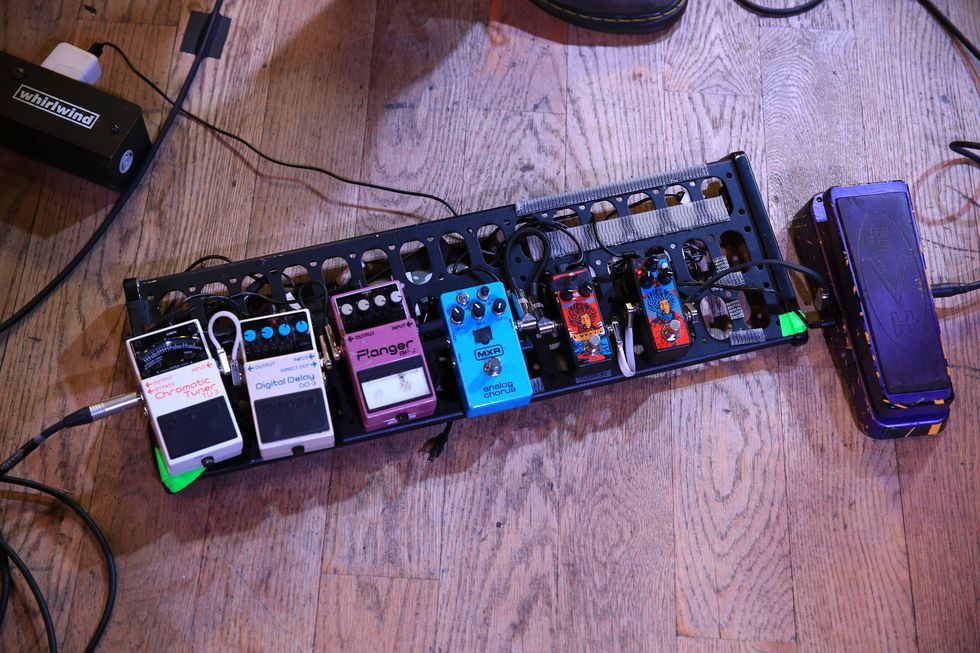

![Rig Rundown: AFI [2025]](https://www.premierguitar.com/media-library/youtube.jpg?id=62064741&width=1245&height=700&quality=70&coordinates=0%2C0%2C0%2C0)




















 Zach loves his Sovtek Mig 60 head, which he plays through a cab he built himself at a pipe-organ shop in Denver. Every glue joint is lined with thin leather for maximum air tightness, and it’s stocked with Celestion G12M Greenback speakers.
Zach loves his Sovtek Mig 60 head, which he plays through a cab he built himself at a pipe-organ shop in Denver. Every glue joint is lined with thin leather for maximum air tightness, and it’s stocked with Celestion G12M Greenback speakers.







